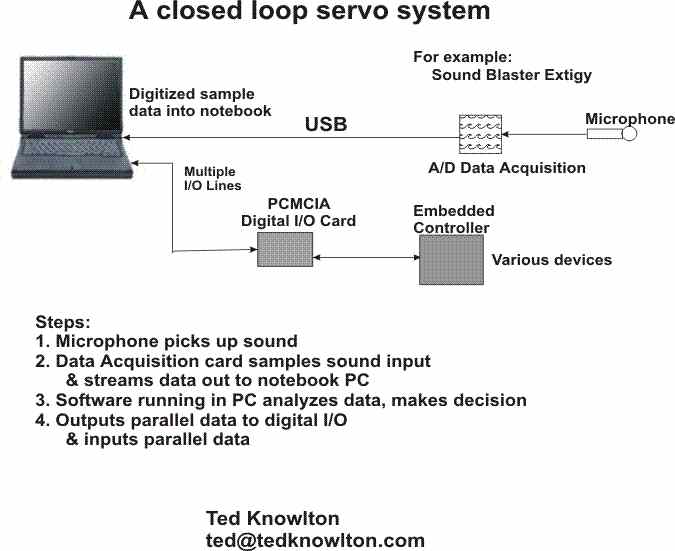

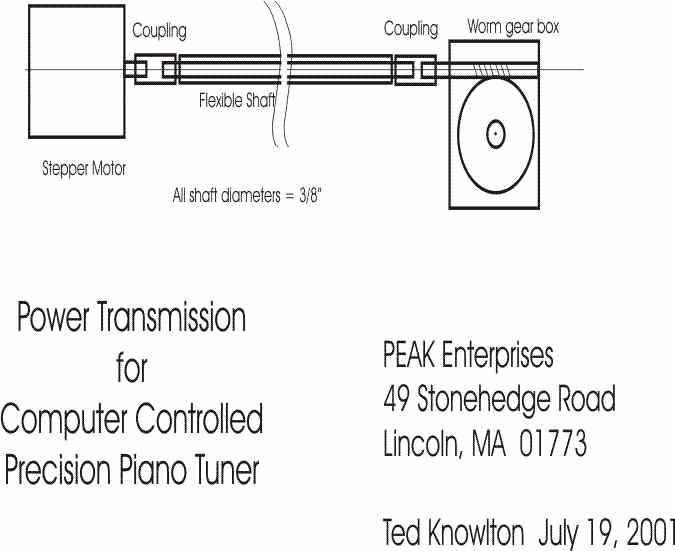
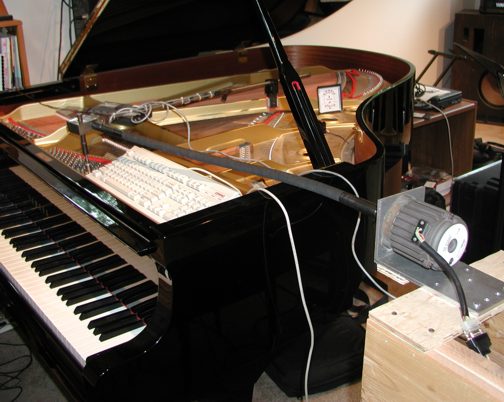 |
Stepper motor on right
connects through a flexible shaft to a worm gear box.
The gear box output shaft connect directly to a tuning pin on the piano. |
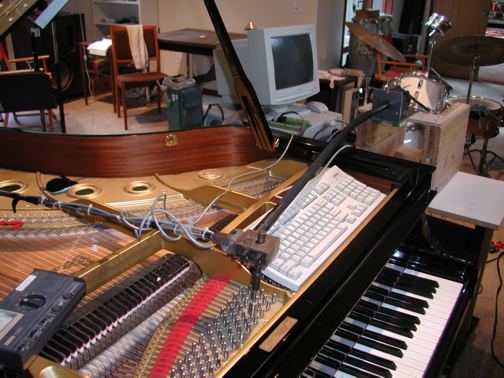 |
Another view of the worm gear box. |
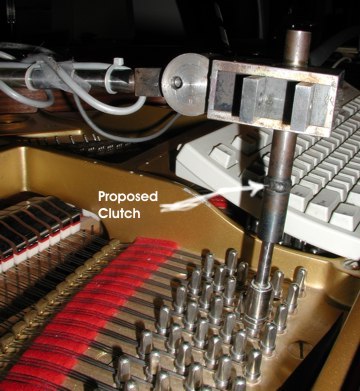 |
A close-up of the worm gear box showing the connection with the torque restraining bar. |
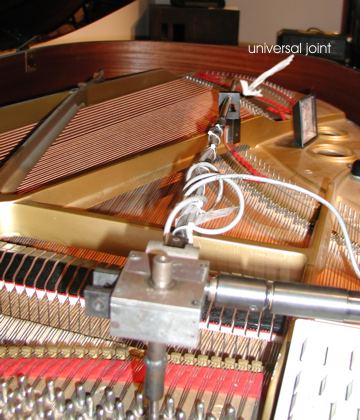 |
The torque restraining
bar clamps to the frame of the piano. The white wire is a connection
to a strain gauge mounted in the middle of the bar. The strain gauge
indicates to the PC control program the amount of strain in the torque
restraining bar.
The U-joint allows the whole mechanism to be moved to any tuning pin on the piano. |